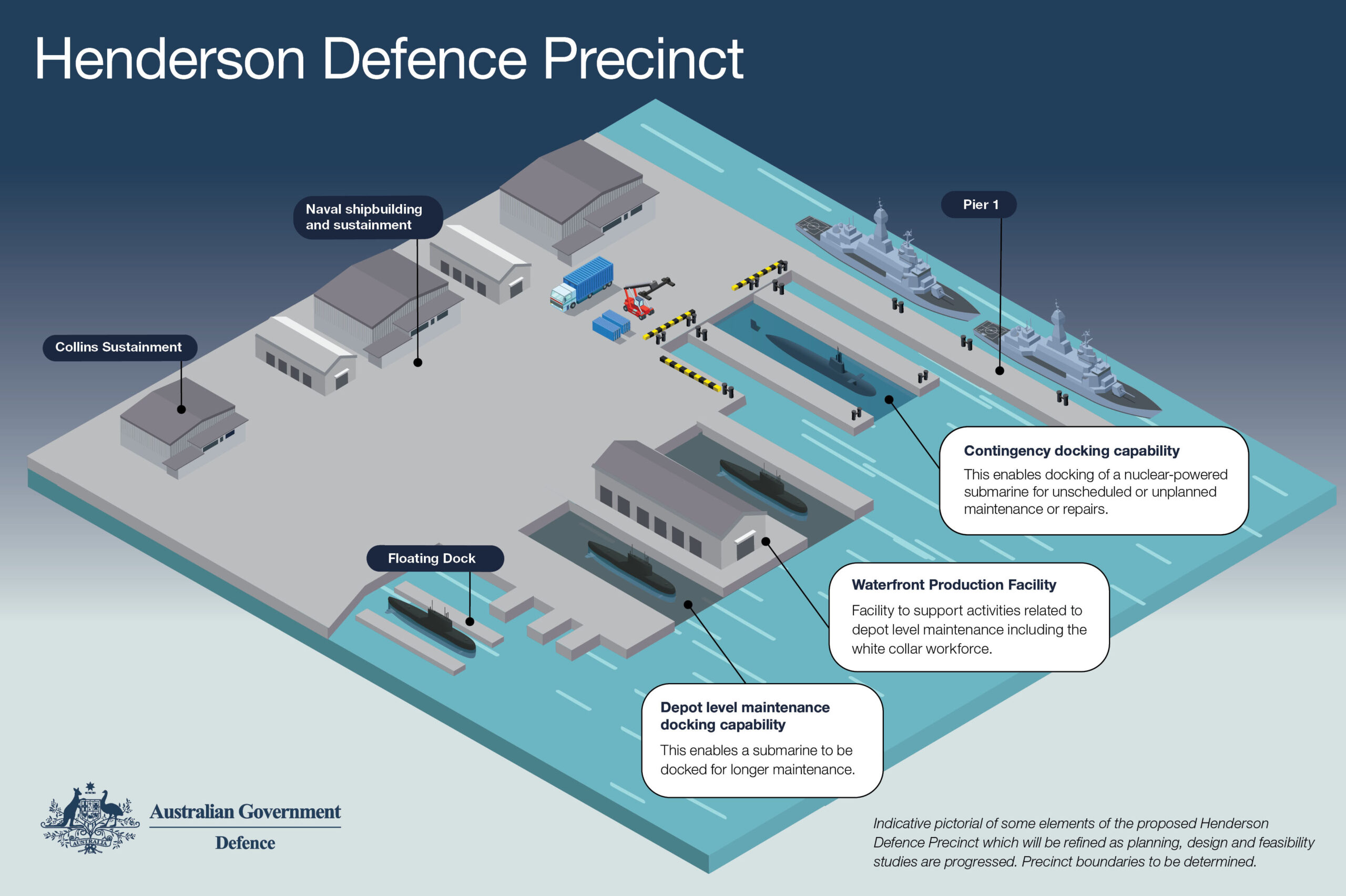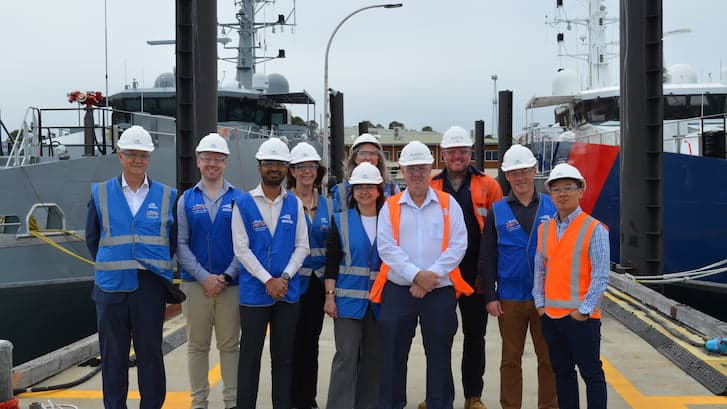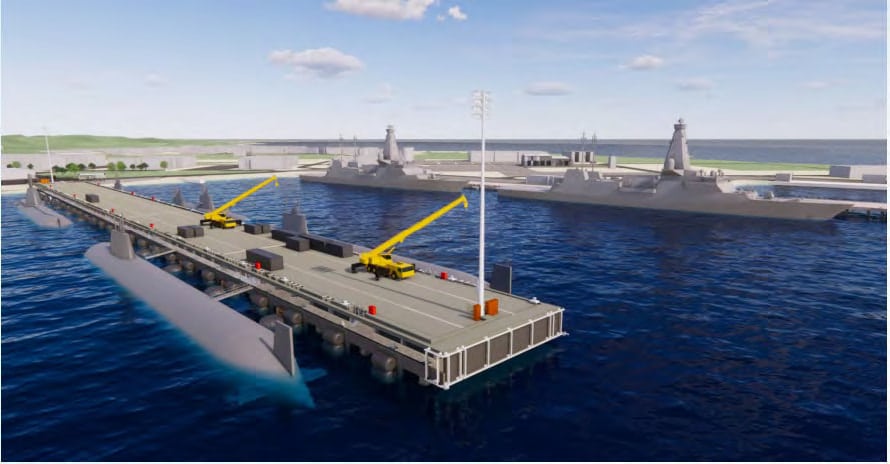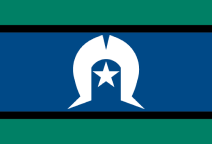Henderson defence hub welcomed, industry awaits funding clarity
The Federal Government’s commitment to establish a “game changing” defence precinct is welcome news to WA businesses, but more certainty on funding timelines is needed to help industry direct investment, CCIWA says.
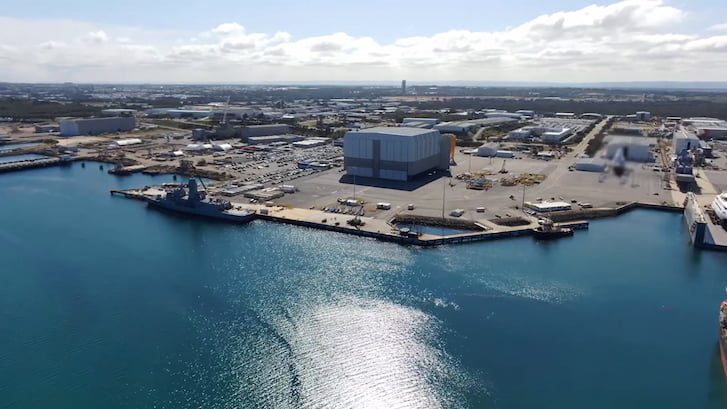
Henderson shipyard. Image: Australian Defence Force
As part of the AUKUS agreement, the Government announced today it will establish the largest naval hub in the southern hemisphere at the Henderson shipyard.
It includes an initial investment of $127 million over three years for planning, feasibility studies and enabling works at the precinct.
Over the next two decades, it is expected to create tens of thousands of secure jobs and will establish a significant industrial pipeline for WA businesses.
CCIWA Chief Executive Chris Rodwell says the commitment will “give a level of confidence to the businesses already in the defence space, and those looking to pivot to defence to make the significant investment needed to become compliant with defence requirements”.
“Importantly, the investment in defence will help WA to further diversify its economy beyond mining, which is critical to securing WA’s long-term economic sustainability,” he says.
“WA’s defence industry has huge potential, not just in terms of its direct impact on jobs and investment but right along the supply chain — many of the skills and innovations WA has developed in the mining sector are directly applicable to defence manufacturing.”
Clarity needed on long-term funding and capability
Rodwell says while the funding commitment is welcome news, it is vital industry has a clear line of sight on long-term funding commitments.
“The defence industry in WA has often been lured by the vision, only to find the funding isn’t there to back it,” Rodwell says.
“There needs to be a detailed pipeline with clear funding milestones, so WA defence businesses and those seeking to enter the industry can invest and expand their businesses with confidence.
“CCIWA calls on the Federal Government to outline an indicative long-term funding timeline in the February budget papers.”
Rodwell says significant investment is also needed in skills and training, to ensure the long-term supply of skilled workers for the sector.
“This includes not only trade-based skills but university level training to ensure WA has the right mix of qualified workers to service a fleet of nuclear submarines,” he says.
“WA is already struggling with skills shortages, so it’s vital the planning happens now to ensure the opportunities presented by AUKUS can become a reality.”
A recent CCIWA roundtable highlighted that uncertainty around infrastructure investment and capability gaps were key barriers for businesses in the defence industry.
What will the defence precinct include?
The defence precinct will aim to support the build of new landing craft for the Australian Army and new general-purpose frigates for the Navy, with requisite large vessel infrastructure.
It is also set to have depot-level maintenance and contingency docking for nuclear-powered submarines, which alone will create about 3,000 jobs.
The Federal and State Governments signed a cooperation agreement to collaborate on:
- A forum for skilled workforce requirements;
- Establishing the necessary infrastructure, including common user facilities;
- Ensuring effective engagement across Federal, State and local governments and communities.
“This massive investment delivers on my Government’s mission to develop and diversify our State’s economy by providing another economic pathway for our State for decades to follow,” says WA Premier Roger Cook.
“It is a win-win for Western Australia and the nation.”
This is a complimentary WA Works article. For more of this content, including updates on major projects and analysis on supply chains and project issues, subscribe to WA Works.
A subscription includes any-time access to our Major WA Projects List – the most comprehensive and up-to-date list of major projects across the State.




